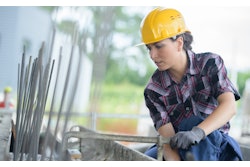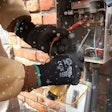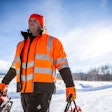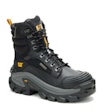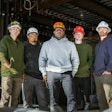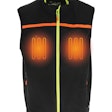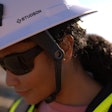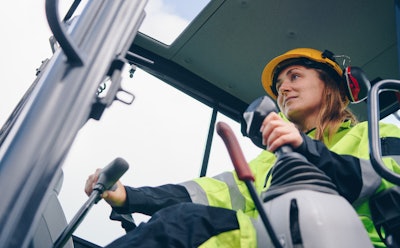
On July 19, 2023, the U.S. Department of Labor announced a notice of proposed rulemaking to clarify the personal protective equipment (PPE) standard for the construction industry as the current standard does not state clearly that PPE must fit each affected employee properly, as does Occupational Safety and Health Administration's (OSHA) general industry and maritime standards.
The proposed change would clarify that PPE must fit each employee properly to protect them from occupational hazards. OSHA does not expect the change will increase employers' costs or compliance burdens. Those wishing to submit comments and hearing requests may do so online by September 18 using the Federal eRulemaking Portal. Reference Docket No. OSHA-2019-0003. Read the Federal Register notice for details.
The failure of standard-sized PPE to protect physically smaller construction workers properly as well as problems with access to properly-fitting PPE have long been safety and health concerns in the construction industry, especially for women.
"If personal protective equipment does not fit properly, an employee may be unprotected or dangerously exposed to hazards and face tragic consequences," notes Assistant Secretary for Occupational Safety and Health Doug Parker. "We look forward to hearing from stakeholders on this important issue as we work together to ensure that construction workers of all genders and sizes are fitted properly with safety gear."
PPE for Women
Previous IRONPROS reports addressing the challenges women in construction face in obtaining properly-fitting PPE have noted while the U.S. Bureau of Labor Statistics indicates nearly 11 percent of the construction workforce is female, studies show the construction industry is still behind in providing women workers safe and comfortable apparel.
One study, ‘Fitting In: Analyzing the Fit of Safety Vests in the Construction Industry’ by Lizette Galvez Puentes at California Polytechnic State University in San Luis Obispo, California, highlights concerns about the sizing of safety vests setting women up for getting caught on jobsite materials and calls upon the construction industry to “accommodate the changing gender demographics.” The study also acknowledged a lack of maternity safety vests, forcing workers to “size up to a ridiculous size that doesn't fit anywhere else but the baby bump,” instead of providing adjustment options such as waist cinching for their current vests.
A recent J. J. Keller Center for Market Insights poll shows despite growing numbers of women in jobs requiring PPE, they still have trouble finding well-fitting PPE. Eighty-four percent say they struggle to find properly fitting PPE, with 75 percent indicating PPE impacts their feeling of job safety.
“Some of the safety issues of ill-fitting PPE include loose-fitting apparel getting caught in machinery and decreased grip from larger-than-needed gloves, which can lead to accidents,” noted Robin Marth, J. J. Keller subject matter expert and Environmental Health and Safety editor.
A National Institute for Occupational Safety and Health (NIOSH) report notes PPE and Protective Equipment and Clothing (PPC) such as respirators, gloves and work boots are mostly designed to fit average-sized men, offering reduced protection to women in construction. The ‘shrink it and pink it’ topic was addressed extensively in a recent Harvard Advanced Leadership Social Impact Review article by Karen Korellis Reuther, a former NIKE and Reebok creative executive and Senior Fellow at Harvard University's Advanced Leadership Initiative in Cambridge, Massachusetts.
Korellis Reuther – who argues that “women aren’t just smaller men” – explains ‘shrink it and pink it’ is a common phrase used in the product creation world for designing products for women. Women have far too long been given no choice but to wear products designed by men for men that were merely scaled down and colored pink or another stereotypical feminine color, she notes.
OSHA's Considerations
OSHA notes women’s PPE should be based upon female anthropometric (body measurement) data.
Issues relating to fit include decreased mobility, dexterity and coordination through oversized garments and gloves, and improperly fitted boots or shoes. There is a concern of increased risk of injury or accidents through ill-fitting hard hats sliding or falling off; oversized safety glasses leaving gaps; a poor fit leaving area of exposure, and oversized garments leading to tripping or catching on equipment.
A comfortable garment is lightweight in that it doesn’t ‘weigh down’ the woman wearing it, is breathable in allowing heat and air to flow through and is moisture-wicking.

